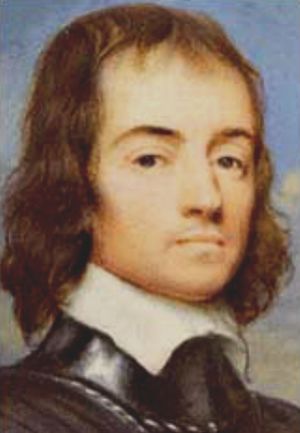Robert Lilburne facts for kids
Robert Lilburne (born 1613, died 1665) was an English soldier who fought for the Parliament during the English Civil War. He was the older brother of John Lilburne, who was a famous leader of a group called the Levellers. Unlike his brother, Robert Lilburne stayed loyal to Oliver Cromwell and the army. He is also known as a regicide, which means he signed the document that ordered the death of King Charles I in 1649. He was one of 59 people who signed this important paper.
Contents
Robert Lilburne in the Civil War
When the First English Civil War began, Robert Lilburne joined the Parliament's army, known as the Roundheads. By 1644, he had become a captain. He then formed his own group of soldiers on horseback in County Durham. This group joined Lord Fairfax's army in the north. Later, Lilburne became a Colonel in the New Model Army, which was Parliament's main army.
The Levellers and Army
Robert Lilburne and his soldiers had ideas similar to the Levellers. The Levellers were a group who wanted more fairness and rights for ordinary people. Lilburne's soldiers even marched without orders to a meeting called the Corkbush Field rendezvous. They hoped to share their ideas, called the "Agreement of the People," with the army leaders.
During this event, some of Lilburne's soldiers wore papers in their hats that said, "England's Freedom, Soldiers' Rights." When an officer from the army commander, Sir Thomas Fairfax, approached them, some soldiers threw stones. Oliver Cromwell, who was second-in-command, rode in and told them to remove the papers. Some soldiers were arrested and faced serious consequences as a warning to others.
Important Battles and Roles
Even after this incident, Lilburne was made Governor of Newcastle-upon-Tyne. During the Second English Civil War, he helped Cromwell and Lambert defeat their enemies at the Battle of Preston. In December 1648, Lilburne was chosen to be one of the people who would decide the fate of King Charles I. He attended the trial and signed the king's death warrant. He also helped in the siege of Pontefract Castle.
During the Third English Civil War, Lilburne fought with Oliver Cromwell in Scotland. When the Scottish army invaded England, Lilburne defeated English Royalists at the Battle of Wigan Lane in 1651. This victory stopped the Royalists from joining the Scots, who were later defeated at the Battle of Worcester. This battle marked the end of the English Civil Wars. In 1651, Lilburne returned to Scotland as part of the army that was keeping order there. He took command of the army in Scotland in 1652, but he later handed over command to General George Monck in 1654.
Life After the War
After the Civil War, during a time known as the Interregnum (when England had no king), Robert Lilburne supported Oliver Cromwell. In 1654, he became Governor of York. The next year, he led the army units that stopped an uprising in York. He was also elected as a Member of Parliament (MP) for County Durham in 1654.
Later, he was elected MP for the East Riding of Yorkshire. However, he did not agree when Cromwell was offered the crown, and he felt uneasy about some of the new government rules.
The King Returns
When Oliver Cromwell died, Robert Lilburne did not support Cromwell's son, Richard. Instead, he supported bringing back the old Parliament and the English Commonwealth. He joined the army's Committee of Safety and supported General John Lambert when Lambert tried to stop General George Monck from marching on London.
When this failed and the king was brought back to power in what is called the Restoration, Lilburne was arrested. He was arrested along with all the other people who had signed the king's death warrant and were still alive in Britain. On October 16, 1660, Lilburne was found guilty of high treason. He was sentenced to death, but this punishment was later changed to life imprisonment. He died as a prisoner on Drake's Island in Plymouth Sound in August 1665.
Family Life
Robert Lilburne married Margaret Beke. They had three sons who lived longer than he did.


